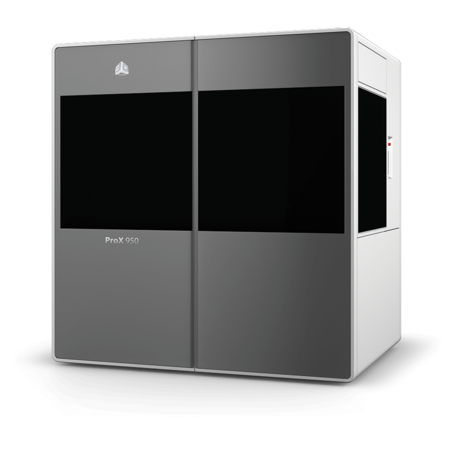Northrop Grumman’s RP and M team uses 3D Systems SLA additive manufacturing technologies to create tools.
Aircraft maintenance and repair personnel have a tough job - for a number of reasons. First, they must ensure that every part on the aircraft they service can withstand the rigors of flight, so that risks to the safety of the crew and any passengers that might be on board are minimized. They also must minimize aircraft downtime while making sure that repair costs are controlled.
Northrop Grumman Corp., El Segundo, Calif., has mastered this balancing act, largely due to the efforts of its Rapid Prototyping and Manufacturing (RP&M) team.
Northrop Grumman’s RP&M team has shown a remarkable ability for creating the perfect modification tool for the task at hand. The team also discovered a surefire method for reducing to an absolute minimum both the time and cost associated with building those tools.
Northrop Grumman’s RP&M team uses 3D Systems SLA additive manufacturing technologies to create tools. 3D Systems invented SLA technology in the late-1980s and continues to develop and supply systems for a wide range of applications.
Rapid Manufacturing
Before additive manufacturing companies relied on conventional prototyping methods which require cutting sample parts on regular production machines or by hand. These samples often need to be created multiple times before a working prototype is produced.
With SLA technology the fixture tools are created directly from a CAD file which significantly increases accuracy and speed and decreases the need and time required for multiple iterations. As the 3D print materials used to create rapid prototypes have improved companies have been able to use the technology to create end-use parts. This ability is known as rapid manufacturing, a technique that Northrop Grumman knows inside out.
Precision Maintenance for Aircraft
Of the 700-plus tools that Northrop Grumman has created using stereolithography, none is more impressive than its aircraft repair kit. This kit, which is used to modify aircraft in the field, allows Northrop Grumman technicians to use minimal manual labor in what traditionally would have been major teardown-and-rebuild operations. “I liken it to surgery,” says Chris Farren, manager of technology applications for Northrop Grumman’s Air Combat Systems, of performing repairs with the kit. “We don’t have to disassemble nearly as much of the aircraft as we typically would.”
The Northrop Grumman RP&M team initially developed the kit for a specific task, which it performed flawlessly the first time out. That result can be attributed to the intense preparation on the part of the RP&M team, a process that also was enhanced by 3D Systems’ SLA technology.
The initial repair task was to reshape a component located in a hard-to-reach section of an aircraft. Doing that without tearing down an entire section of the aircraft – and spending millions of dollars in the process – required a tool that would allow a technician to reach inside the aircraft and reconfigure the component without having to see it.
Developing a Flawless Procedure
The repair kit, which fits in a standard-size suitcase, consists of a set of tools for shaping metal into a particular profile, along with a number of guides and gauges for ensuring that any cuts in the metal are set at the proper angle and depth. There also is a port for cooling the metal during the shaping or cutting process and a second port for extracting debris.
Because the technician could not see inside the aircraft, he had to rely on the tool, which employed its depth gauges and other guides, to first find the right location and then create the proper shape. “The operation worked flawlessly the first time, on both the left and right sides of the aircraft,” Farren says. “This process was anywhere from 10 to 100 times less expensive than conventional methods, primarily because we were able to build this tool, test it and use it without having to go through an iterative development process.”
Farren says that the repair kit represents the ultimate step in Northrop Grumman’s use of SLA technology. “We bought our first SLA machine from 3D Systems roughly 10 years ago as a prototype development tool,” he explains. “We used it to build wind-tunnel models and development projects, but it spent most of its life in the engineering department.” About three years ago, Farren adds, the production department acquired an SLA system, and the use of the technology has since spread across the Integrated Systems/Air Combat Systems Business Area.
“We are proposing the use of SLA technology for our next generation of aircraft,” Farren says. “This is a reliable and cost-effective method for making the exact tool that you need for a given job. We have shattered the notion that only metallic tools are durable. With the current state of SLA technology, including the plastic resins on the market today, you can take tools directly out of an SLA machine and use them in the field.”
For Northrop Grumman, rapid manufacturing is now a viable, beneficial reality.
